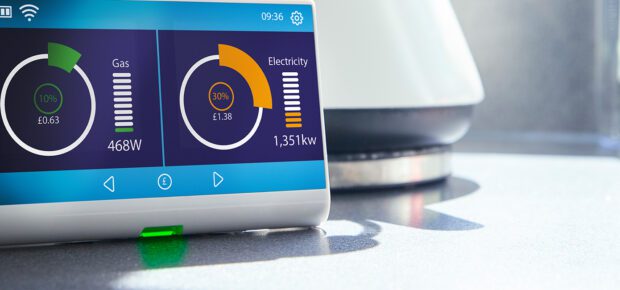July 28, 2021
The electrical grid is a marvel of modern engineering that underpins nearly every aspect of society –– a complex interconnection that spans the tiniest LED lightbulb and the largest power plants.
But as electricity use grows, which it does exponentially, the grid strains. The use of renewable energy sources and new regulations can add to the complexity and strain.
Without the implementation of new technologies and models, we’ll be stuck with an unreliable power system where technical, as well as non-technical parameters, will be neglected. It can lead to significant chaos, harming the interests of various stakeholders. That type of neglect could make commonplace incidents like a 2012 blackout in India that left 230 million without power.
Smart grids are, undoubtedly, the definitive solution for managing electricity distribution in a world dependent on renewable energy.
But what makes them smarter? And why do we need them?
At a core level, the challenges of the grid come down to a simple fact. It needs to produce exactly as much electricity as is demanded. If demand exceeds supply, brown- or black-outs are possible. When supply exceeds demand, power plants may be forced offline to help stabilize frequency and voltage.
Demand fluctuates all the time, from day to night, and from hour to hour. Those demand shifts can be largely predicted based on historical data. Power plants may go on and offline in response to demand. But renewable energy sources change the calculus. They produce power based on factors like weather, which may not match demand.
That’s where smart grids come in. As the smart grid is a two-way system, it will act as a safeguard, automatically rerouting power in case of equipment failure and power outages. They integrate information technologies with renewable energy sources, creating a two-way conversation between suppliers and consumers. This conversation is enabled with smart metering devices, which accurately monitor power consumption at a granular level.
Smart grids enable the efficient transmission of electricity, better restoration of electricity after fluctuations, lower peak demand and power costs for consumers, provide better integration of renewable energy systems with the power grid, improved security and much more.
Smart Architecture for a Complex World
Smart metering offers substantial benefits like reduced commercial losses, effective monitoring of energy (real-time or near real-time), energy theft detection, enhancements in grid reliability and better revenue management. Furthermore, it enables customers to keep track of their energy consumption, allowing them to adjust their usage as required.
Presently, researchers are more focused on the deployment of more complicated information, communication technologies and control in a multi-layered architecture. The two-way communication between a smart meter and the grid may allow an automated building, for example, to detect when consumption is high. It could, for example, turn off power to uninhabited parts of the building in response, or adjust heating and cooling settings in response.
But that two-way communication adds another layer of complexity, because demand may shift again because of reactions from smart meters, just as the grid brings more power sources online.
Power generated by renewable sources and corresponding action taken by business layers is not predictable. So it’s imperative that the latest controls are leveraged in the service of smart grids. As the smart grid evolves, it will undoubtedly transform grid operations in the same way the internet did.
The smart grid shows an unmatched scope to move the electrical energy industry into a new milestone of reliability and efficiency that will enhance our environment’s health. Undeniably, this transition period is crucial. The adoption of sophisticated testing and control technologies, raising consumer awareness and implementing regulations and standards for the same would require robust engineering and management protocols.
ABOUT OUR AUTHOR
Inderpreet Kaur is an IEEE Senior Member, and a member of IEEE Industry Applications Society and the IEEE Photonics Society.





 Meaningful Momentum or Running in Place?
Meaningful Momentum or Running in Place? AI Through Our Ages
AI Through Our Ages Liquid Infrastructure: Our Planet's Most Precious Resource
Liquid Infrastructure: Our Planet's Most Precious Resource The Impact of Technology in 2025
The Impact of Technology in 2025 Quantum and AI: Safeguards or Threats to Cybersecurity?
Quantum and AI: Safeguards or Threats to Cybersecurity? Why AI Can't Live Without Us
Why AI Can't Live Without Us Bits, Bytes, Buildings and Bridges: Digital-Driven Infrastructure
Bits, Bytes, Buildings and Bridges: Digital-Driven Infrastructure Impact of Technology in 2024
Impact of Technology in 2024 Emerging AI Cybersecurity Challenges and Solutions
Emerging AI Cybersecurity Challenges and Solutions The Skies are Unlimited
The Skies are Unlimited Smart Cities 2030: How Tech is Reshaping Urbanscapes
Smart Cities 2030: How Tech is Reshaping Urbanscapes Impact of Technology 2023
Impact of Technology 2023 Cybersecurity for Life-Changing Innovations
Cybersecurity for Life-Changing Innovations Smarter Wearables Healthier Life
Smarter Wearables Healthier Life Infrastructure In Motion
Infrastructure In Motion The Impact of Tech in 2022 and Beyond
The Impact of Tech in 2022 and Beyond Cybersecurity, Technology and Protecting Our World
Cybersecurity, Technology and Protecting Our World How Technology Helps us Understand Our Health and Wellness
How Technology Helps us Understand Our Health and Wellness The Resilience of Humanity
The Resilience of Humanity Harnessing and Sustaining our Natural Resources
Harnessing and Sustaining our Natural Resources Creating Healthy Spaces Through Technology
Creating Healthy Spaces Through Technology Exceptional Infrastructure Challenges, Technology and Humanity
Exceptional Infrastructure Challenges, Technology and Humanity The Global Impact of IEEE's 802 Standards
The Global Impact of IEEE's 802 Standards Scenes of our Cyber Lives: The Security Threats and Technology Solutions Protecting Us
Scenes of our Cyber Lives: The Security Threats and Technology Solutions Protecting Us How Millennial Parents are Embracing Health and Wellness Technologies for Their Generation Alpha Kids
How Millennial Parents are Embracing Health and Wellness Technologies for Their Generation Alpha Kids Space Exploration, Technology and Our Lives
Space Exploration, Technology and Our Lives Global Innovation and the Environment
Global Innovation and the Environment How Technology, Privacy and Security are Changing Each Other (And Us)
How Technology, Privacy and Security are Changing Each Other (And Us) Find us in booth 31506, LVCC South Hall 3 and experience the Technology Moon Walk
Find us in booth 31506, LVCC South Hall 3 and experience the Technology Moon Walk Virtual and Mixed Reality
Virtual and Mixed Reality How Robots are Improving our Health
How Robots are Improving our Health IEEE Experts and the Robots They are Teaching
IEEE Experts and the Robots They are Teaching See how millennial parents around the world see AI impacting the lives of their tech-infused offspring
See how millennial parents around the world see AI impacting the lives of their tech-infused offspring Take the journey from farm to table and learn how IoT will help us reach the rising demand for food production
Take the journey from farm to table and learn how IoT will help us reach the rising demand for food production Watch technical experts discuss the latest cyber threats
Watch technical experts discuss the latest cyber threats Explore how researchers, teachers, explorers, healthcare and medical professionals use immersive technologies
Explore how researchers, teachers, explorers, healthcare and medical professionals use immersive technologies Follow the timeline to see how Generation AI will be impacted by technology
Follow the timeline to see how Generation AI will be impacted by technology Learn how your IoT data can be used by experiencing a day in a connected life
Learn how your IoT data can be used by experiencing a day in a connected life Listen to technical experts discuss the biggest security threats today
Listen to technical experts discuss the biggest security threats today See how tech has influenced and evolved with the Games
See how tech has influenced and evolved with the Games Enter our virtual home to explore the IoT (Internet of Things) technologies
Enter our virtual home to explore the IoT (Internet of Things) technologies Explore an interactive map showcasing exciting innovations in robotics
Explore an interactive map showcasing exciting innovations in robotics Interactively explore A.I. in recent Hollywood movies
Interactively explore A.I. in recent Hollywood movies Get immersed in technologies that will improve patients' lives
Get immersed in technologies that will improve patients' lives